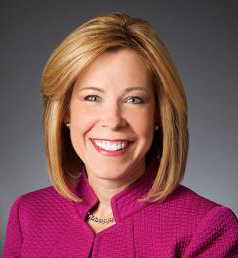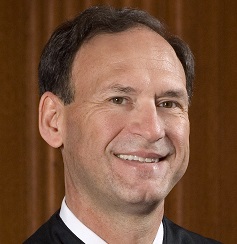One of the key sticking points in the hotly contested debate over LGBTQ discrimination is whether that issue is in any way equivalent to racial discrimination.
Now, Santa has gotten involved. White Santa, that is.
During oral arguments before the U.S. Supreme Court Dec. 5, hypothetical scenarios flew around like reindeer on Christmas Eve. Justices proposed and then returned over and over to hypothetical situations to try to understand what both sides in the case of 303 Creative v. Elenis were saying.
But the most curious hypothetical of the contentious two-hour hearing involved a shopping mall Santa.
The court case involves a website designer, Lorie Smith, who wants to expand her business to include custom websites for weddings but does not want to serve same-sex couples because of her religious beliefs against such unions. Her unwillingness to serve same-sex couples would run afoul of Colorado’s nondiscrimination law. She sued, claiming her rights to free speech based on her religious convictions would be violated — if she actually were to expand her business to create wedding websites, which she has not yet done.
“Waggoner and her firm also represented the Colorado cake baker whose case previously was heard by the high court.”
Two lower courts ruled in favor of Colorado, but Smith and her legal counsel — Kristen Waggoner of the conservative legal aid firm Alliance Defending Freedom — managed to push their appeal all the way to the high court, where the court’s new conservative majority was eager to hear it. Waggoner and her firm also represented the Colorado cake baker whose case previously was heard by the high court in Masterpiece Cake Shop v. Colorado.

Ketanji Brown Jackson
Justice Ketanji Brown Jackson, the court’s newest member, brought Santa to the debate as a way to explore the question of whether excluding gay couples is or is not like racial discrimination. She also was responding to Smith’s assertion that her website designs are custom-made and therefore constitute protected speech.
Speaking to Waggoner, the website designer’s attorney, Jackson said: “I also heard you suggest earlier that there’s something different about race, maybe the person wouldn’t sell to someone of a different race. So suppose you say that photography is expressive. Can you give me your thoughts on a photography business in a shopping mall during this holiday season that offers a product called Scenes with Santa, and this business wants to express its own view of nostalgia about Christmases past by reproducing classic 1940s and 1950s Santa scenes. They do it in sepia tone and they are customizing each one. This is not off a rack. They’re really bringing the people in and having them interact with Santa, children, because they’re trying to capture the feelings of a certain era.
“But precisely because they’re trying to capture the feelings of a certain era, their policy is that only white children can be photographed with Santa in this way because that’s how they view the scenes with Santa that they’re trying to depict. Now the business will gladly refer families of color to the Santa at the other end of the mall who will take anybody, … and they will photograph families of color in other scenes — other scenes, so they’re not discriminating against the families.”
Jackson continued: “What they’re saying is Scenes with Santa is preserved for white families and they want to have a sign next to the Santa that says, ‘only white children.’ Why isn’t your argument that they should be able to do that? And maybe it is?”

Kristen Waggoner
Waggoner demurred, saying the objection is not the photograph itself — but Jackson interrupted her.
“The objection, just like your client’s objection, is to expressions that violate their own views of what is being depicted, and so their view of what is being depicted is that a scene with Santa and a child on the lap and all of that in sepia tone, trying to harken back to the good old days, should only have white children in it. That’s their firm belief. They are not willing to take photographs of Black, Hispanic, Asian children on Santa’s lap. Why is that any different than a situation like this?”
Waggoner did not agree with the comparison in Jackson’s question. Her client’s objection to creating websites for same-sex couple is not like racial discrimination in this way, she said, because her client is engaged in “speech” and photos with Santa are not speech.
“Waggoner repeatedly portrayed her client as the creative producer of speech.”
Throughout the oral arguments, Waggoner repeatedly portrayed her client as the creative producer of speech — even though multiple justices equated her work more with a plug-and-play template common to most all wedding websites.
Her client is “a creator of speech” in a way the photographer of a whites-only mall Santa is not, Waggoner insisted.

Samuel Alito
And then Justice Samuel Alito — one of the court’s most conservative members and the author of this year’s decision overturning 50 years of court precedent on access to abortion — interjected.
He asked whether in Obergefell — the Supreme Court case that legalized same-sex marriage nationwide — the court said “that religious objections to same-sex marriage are the same thing as religious or other objections to people of color?”
Waggoner replied: “No. In fact, it said that decent and honorable people hold beliefs about marriage, believing that there’s a gender-differentiated marriage and that’s based on reasonable religious and philosophical premises.”
Later, the mall Santa made a return appearance in the debate.
After some other acrimonious debate, Justice Alito referred to what he called Justice Jackson’s “example of the Santa in the mall who doesn’t want his picture taken with Black children,” although the hypothetical she proposed had nothing to do with the beliefs of the person playing Santa but everything to do with the business owner, the creator of the vintage photographs.
“So if there’s a Black Santa at the other end of the mall and he doesn’t want to have his picture taken with a child who’s dressed up in a Ku Klux Klan outfit, that Black Santa has to do that?” Alito asked.
Eric Olson, solicitor general for the state of Colorado, replied: “No, because Ku Klux Klan outfits are not protected characteristics under public accommodation laws.”
 Justice Kagan inserted: “And, presumably, that would be the same Ku Klux Clan outfit regardless whether the child was Black or white or any other characteristic.”
Justice Kagan inserted: “And, presumably, that would be the same Ku Klux Clan outfit regardless whether the child was Black or white or any other characteristic.”
To which Alito quipped: “You do see a lot of Black children in Ku Klux Klan outfits, right? All the time.”
Earlier, Alito had directed a joke at Justice Kagan — who is Jewish — about a theoretical Jewish version of the controversial dating website Ashley Madison.
Court observers took to social media to express their shock and dismay at Alito’s attempt at humor.
But behind all this is a much more important question about how race and sexual orientation are alike or not alike. The racial illustrations and questions of the oral arguments did not come out of nowhere.
“For the liberal justices on the court, the comparison is essential. For the conservative justices on the court, the comparison is inconvenient.”
For the liberal justices on the court, the comparison is essential. For the conservative justices on the court, the comparison is inconvenient.
Liberals and some moderates insist that the campaign for gay rights is a follow-on to the Civil Rights Movement. The reasoning is that Black people don’t choose their skin color any more than gay people choose to be gay. Both sexual orientation and race are factors beyond anyone’s control, therefore excluding anyone on either basis is discriminatory and immoral.
Conservatives — especially theological conservatives — hate this comparison because many of them believe sexual orientation is a choice. They do not believe anyone is born with an attraction to people of the same gender, nor do they believe anyone is born in a body that doesn’t match their true gender of the person inside the body.
And even among theological conservatives who might believe same-sex attraction is the result of nature more than nurture, there is a general unwillingness to equate gay rights with civil rights — in part because of the six so-called “clobber passages” cited from the Bible against same-sex relations.
In this era of America’s reckoning over racism and slavery and the teaching of history, gay rights often get overlaid on the same path as civil rights. As demonstrated in this week’s Supreme Court hearing, that’s a natural and important argument for progressives, but it often remains a joke for theological conservatives.
Mark Wingfield serves as executive director and publisher of Baptist News Global.
Related articles:
Once again, white evangelicals are outliers on beliefs about race and American history
Supreme Court hears case of wedding website designer who won’t serve same-sex couples
Most Americans oppose high court’s decimation of church-state separation, surveys show
Supreme Court to hear case of wedding website designer who won’t serve same-sex couples


